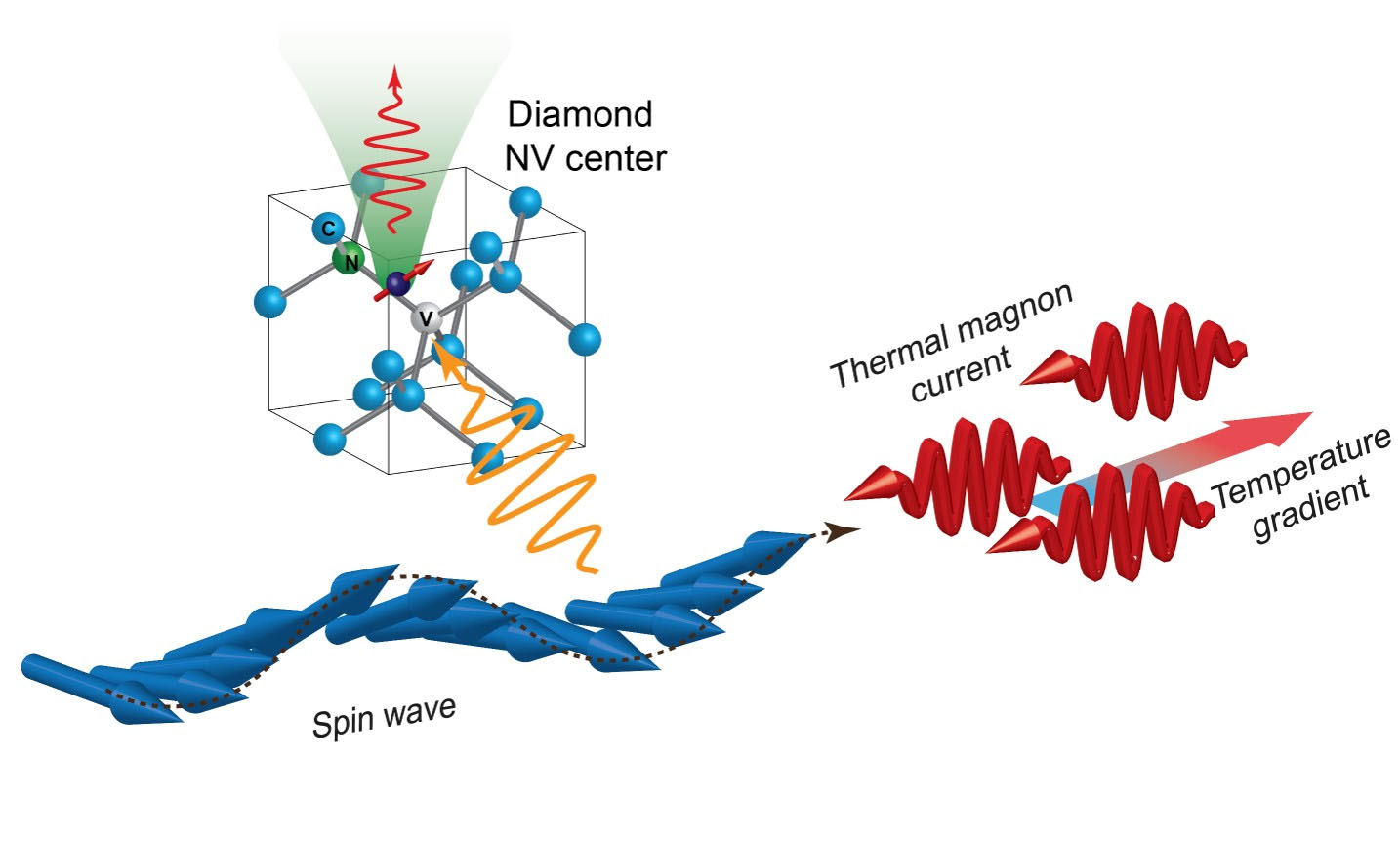| Jan 26, 2022 |
Diamond quantum sensor detects 'magnetic flow' excited by heat
(Nanowerk News) In recent times, sustainable development has been the overarching guiding principle of research concerning environmental issues, energy crises, and information and communication technology. In this regard, spintronic devices have emerged as promising candidates for surpassing conventional technology, which has run into the problem of excess waste heat generation in miniaturized devices. The electron “spin” responsible for the electric and magnetic property of a material are being used to develop next generation energy-efficient and miniature spintronic devices.
|
|
At the heart of this new technology are “magnons,” quanta of spin excitation waves, and their detection is key to further progress in this field. Recently, within the field of spintronics, devices based on the interaction between spin and heat flow have emerged as a potential candidate for new thermoelectric devices (devices which convert heat to electricity).
|
|
In the meantime, nitrogen-vacancy (N-V) centers in diamond, basically a point defect consisting of a nitrogen atom paired with an adjacent lattice vacancy, has emerged as a key for high-resolution quantum sensors. Interestingly, recently, it has been demonstrated that N-V centers can detect coherent magnon.
|
|
However, detecting the thermally excited magnons by heat using N-V centers is difficult since the thermal magnons have much higher energy than the spin state of N-V centers, limiting their interaction.
|
|
Now in a collaborative study published in Physical Review Applied ("Probing Thermal Magnon Current Mediated by Coherent Magnon via Nitrogen-Vacancy Centers in Diamond"), Associate Professor Toshu An from Japan Advanced Institute of Science and Technology (JAIST) and Dwi Prananto, a PhD graduate from JAIST, along with researchers from Kyoto University, Japan, and the National Institute for Materials Science, Japan, have successfully detected these energetic magnons in yttrium iron garnet (YIG), a magnetic insulator, by using a quantum sensor based on diamond with NV centers.
|
 |
| This image shows the interaction between N-V centers, the thermal magnon current, and the low-energy spin waves (coherent magnons). (Image: Toshu An, JAIST)
|
|
To achieve this feat, the team used the interaction between coherent, low-energy magnons and N-V centers as an indirect way to detect the thermally excited magnons. As it turns out, the current produced by thermal magnons modifies the low-energy magnons by exerting a torque on them, which can be picked up by the N-V centers. Therefore, the method provides a way to detect thermal magnons by observing the changes in the coherent magnons.
|
|
To demonstrate this, the researchers set up a YIG garnet sample with two gold antennas placed at the ends of the sample’s surface and placed a small diamond sensor at the center of the sample close to the surface. They then set up low-energy spin waves corresponding to the coherent magnons in the sample using microwaves and generated thermal magnons by producing a temperature gradient across the sample. Sure enough, the diamond sensor picked up on the changes to the coherent magnons caused by the induced thermal magnon current.
|
|
The ability to detect thermal magnons with N-V centers is particularly advantageous, as Dr. An explains: “Our study provides a detection tool for thermal magnon currents that can be placed locally and over a broad range of distances from spin waves. This is not possible with conventional techniques, which require a relatively large electrode and specific configurations with proximal distance to the spin waves.”
|
|
These findings could not only open up new possibilities in quantum sensing but also pave the way for its integration with spin caloritronics. “Our work could lay the foundation for spintronic devices controlled by heat sources,” says Dr. An.
|

